Marine Water Desalination
Home » Water Desalination System » Marine Water Desalination
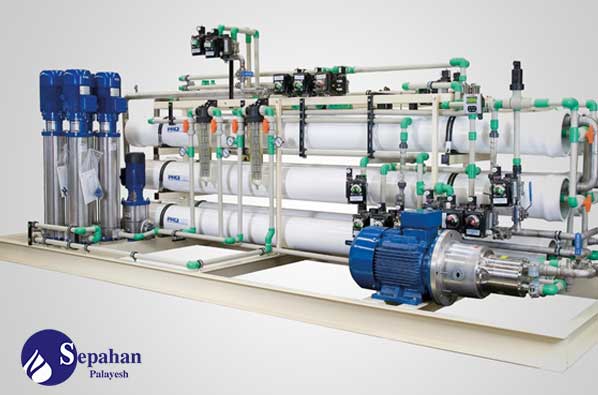
What is a water desalination device? What is the difference between industrial and marine water desalination?
In this article, we will introduce the desalination water device, explain how to use it, and discuss the factors influencing the purchase of marine desalination equipment.
Roughly 70% of the Earth’s surface is water. However, the high salt content of the oceans and seas has led to a significant scarcity of drinkable water for humans. That has resulted in a substantial demand for fresh water in urban and industrial areas, prompting the establishment of marine desalination plants to produce potable water.
Three technologies ( thermal distillation, reverse osmosis, and electrodialysis desalination) have been economically developed to desalinate seawater.
The semi-permeable membrane, also known as the membrane, is a crucial component of the water desalination device. It separates the incoming salty water flow into a saltier and sweeter flow. Depending on the water quality, salinity, and temperature, the RO system may be either double-pass or single-pass. The single-pass system is designed based on European standards to produce the highest quality drinking water.
The marine water desalination device differs from the industrial water desalination device. The main variances include the sand filter pump, high-pressure pump, pressure vessel, membrane, and steel piping.
What is a water desalination device?
Reverse osmosis (RO) is an economical method for producing fresh water in industrial desalination devices. It also produces semi-saline water.
When designing an industrial reverse osmosis (RO) system, it is essential to consider several factors to ensure maximum efficiency. The water entering the industrial desalination device has a hardness level between 200 and 15000. Being aware of this, designers and manufacturers must carefully select the type of pump and RO elements for the system.
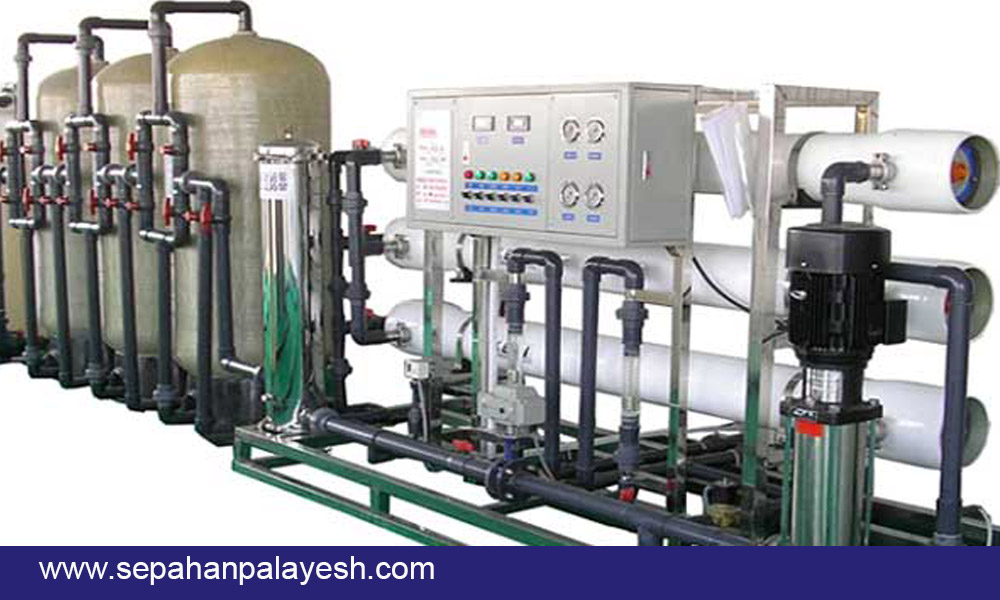
The main applications of industrial water purifiers
- Production of brackish water
- Production of water needed for the rapid growth of livestock and poultry
- Production of water for agricultural and greenhouse uses
- Production of process water for pharmaceutical and cosmetics factories
- Production of process water for petrochemical, steel, textile, papermaking, dyeing, etc.
- Water production for steam power plants and sequential cycle
- Water production for Steam boilers and combined cycle
- Water production for steam boilers, refrigeration systems, and heat exchangers
- Production of water for dialysis devices in hospitals
- Industrial waste recycling
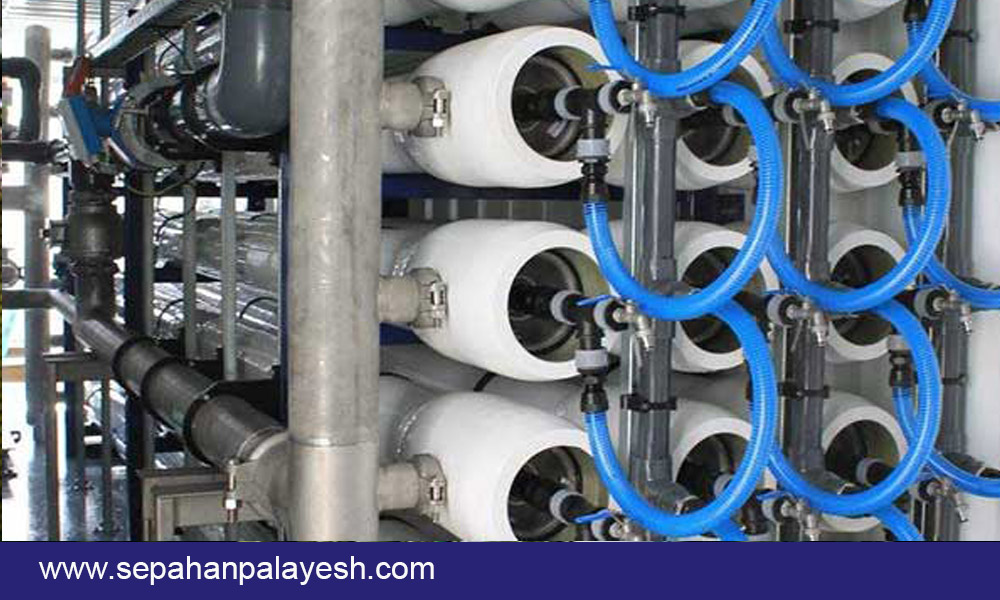
What is a marine water desalination?
The substantial demand for freshwater prompted the establishment of Marine reverse osmosis (SWRO) technology to produce potable water.
Marine water desalination plants purify seawater or highly saline groundwater with TDS <40000 mg/L and total soluble solids (TSS) TSS>30.
The water purification process in this system includes pre-treatment stages(sand filters, carbon filters, anthracite, and microfilters) and a membrane. The quality of the resulting water meets the standards for drinking water.
What is the difference between marine and industrial desalination water?
First, we need to explain the difference between seawater and hard water.
The average salinity of seawater is about 3.5% (35 g/L, 599 mm). This means that every kilogram (approximately one liter) of seawater contains around 35 grams of dissolved salts, mainly sodium (Na+) and chloride (Cl−), and has an average density of 1.025 kg/L. Freshwater is denser (density 1.0 kg/L) because dissolved salts increase mass relative to volume. As salt concentration increases, the freezing point of seawater decreases.
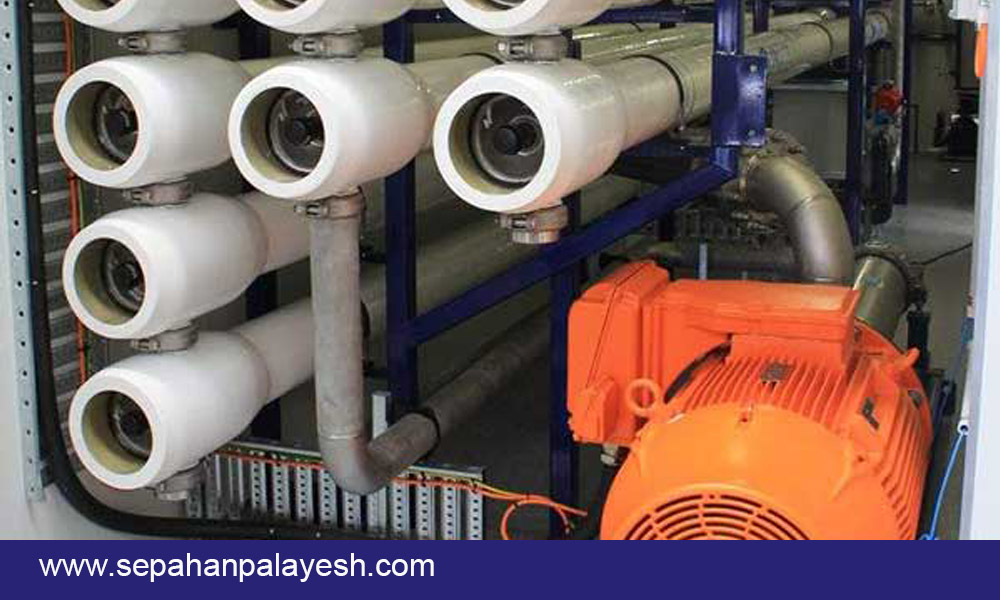
Because of the differences in seawater composition, the equipment used in marine water desalination devices differs from that in industrial desalination devices.
- sand filter pump,
- high-pressure pump,
- Presher Wessel
- members
- steel piping
In most marine water desalination systems, the pressure vessel is a 1200 psi type and class 40 to 6 316 steel piping. The membrane and all connections are for marine use.
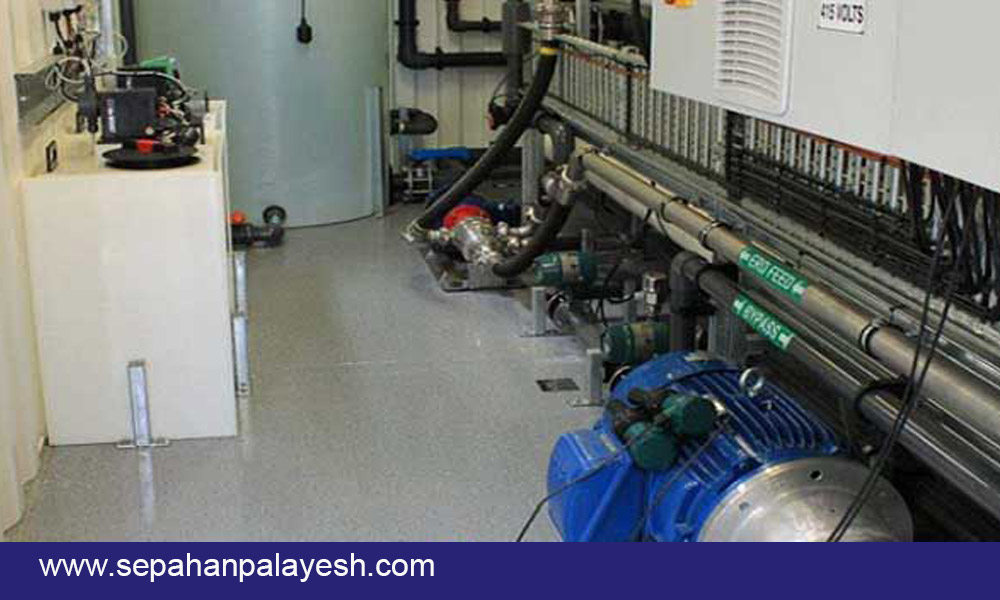
Features of a marine water desalination device
- Minimizing the workload of the high-pressure pump:
Less waste, more production - Selection of elements based on the quantity of solutes or hardness
In most marine water desalination systems, the pressure vessel is a 1200 psi type and class 40 to 6 316 steel piping. The membrane and all connections are for marine use. - Using the CIP pump separately and automatically:
After each shutdown, water flows into the pressure vessel to clean the membranes.
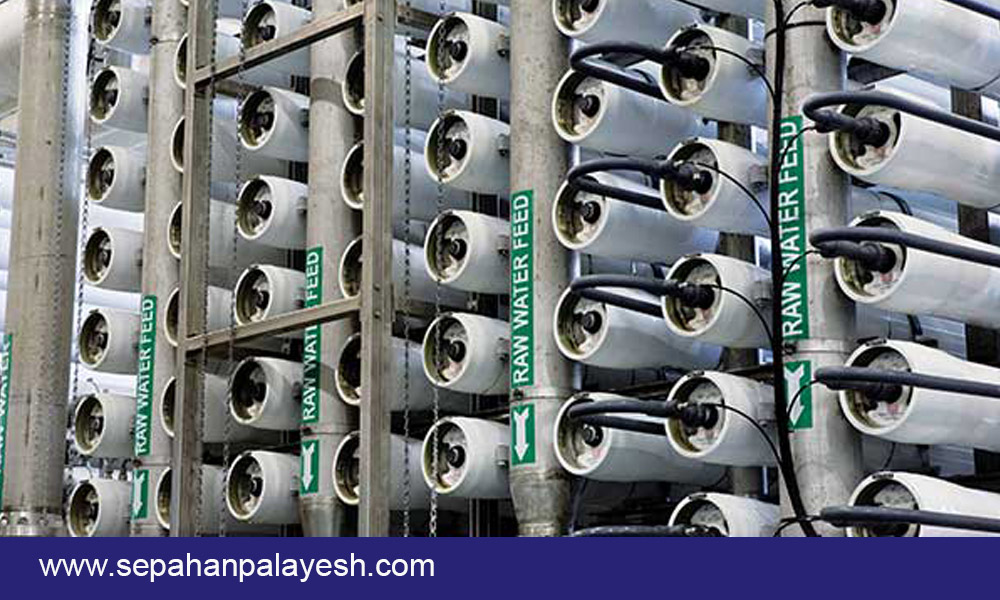
Applications of marine reverse osmosis device
The reverse osmosis method is considered the most effective way to produce freshwater due to its simplicity and cost-effectiveness. The water quality produced using this method is exceptionally high. This system can meet needs in cargo ships, passenger ships, coastal facilities, and for drinking purposes.
The main applications of this device are:
- Desalination of water with high hardness (TDS>20000)
- Provision of drinking water for residential coastal areas and island residents
- Water supply to coastal facilities and industrial sectors
- Provision of drinking water for large cargo and passenger ships
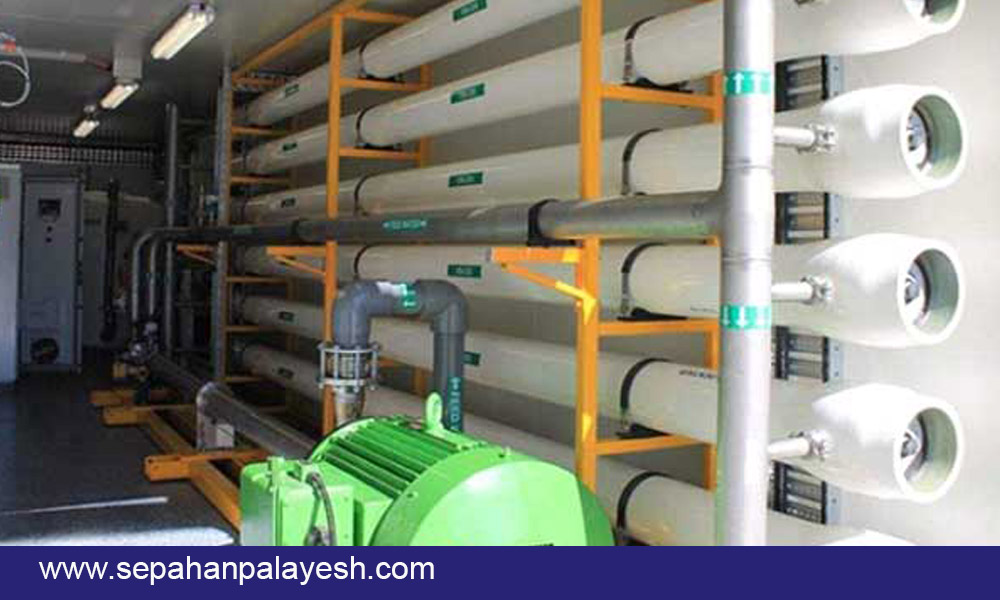
Energy optimization
High-pressure pumps consume the most energy in seawater desalination. Currently, all manufacturers of desalination devices are looking for a solution to optimize energy consumption in high-pressure pumps. All water desalination devices must undergo a pre-treatment process. Proper pre-treatment extends the device’s lifespan and enhances water quality and quantity.
Purpose of pre-treatment
The performance of the pre-treatment system is directly dependent on the quality of the incoming water source. A high amount of suspended solid particles, colloidal particles, and the growth of microorganisms in the membrane will cause the membrane to clog and impose Membrane replacement costs.
The final stage of purification
More than twenty-one mineral elements are essential for the health and metabolism of the human body. These elements include calcium, potassium, magnesium, sodium, iron, zinc, and iodine. The absence of these elements in the body can lead to cardiovascular diseases and immune system disorders. The desalinated water from marine water desalination devices does not contain enough solutes. As a result, in the final purification stage, the dissolved solutes in the water are adjusted to meet human body needs, and the water’s pH is balanced using chemical injections. Injecting materials such as lime and carbon dioxide into water increases the amount of carbonate and calcium in drinking water.
Types of seawater extraction
One of the most crucial aspects of seawater desalination water devices is the method used to extract water from the sea. The characteristics of raw seawater, such as bacterial activity and algae growth, depend on the type of water extraction method. The two most commonly employed methods for harvesting water from the sea are surface intakes and subsurface intakes.
surface intakes
Surface intakes are suitable for large desalination water devices. These surface intakes feature deep and wide channels, equipped with concrete basins fitted with coarse screens to capture debris and a water pumping station. They are constructed on sandy beaches with gentle slopes or rocky shores. Surface intakes, located further away from the coast, are also commonly used for large and medium desalination water devices. These water collection systems consist of small debris traps, pumping stations, electrical equipment, control equipment, and chemical injection equipment.
Subsurface intakes
In this method, desalination water devices collect water from salty aquifers near the coast or from aquifers far from the beach under the ocean. The water that collects in subsurface intakes is pre-purified through filtration in soil layers. Vertical beach wells are one of the methods used to extract subsurface water. In beach wells, trapping and passage of sea creatures is usually much less common. Using subsurface aquifers has environmental effects, including the loss of coastal habitats. One of the most important disadvantages of this method is reducing the level of dissolved oxygen in water.
Influential parameters on the device price
The main parameter is the capacity of the desalination water device. Usually, the capacity of these devices is more than 2 cubic meters per day.
Another influencing parameter is the quality of elements used in the device.
These elements include:
- Power and brand of desalination water device pumps:The best brands are Grand Fos, Levara, Attack, Abara, Danfos.
- Low-pressure piping made of Upvc.
Turkey’s Pimtash brand is superior to Iranian pipes regarding price and quality. - High-pressure piping: Usually, 316 grade 40 to 60 steel pipe is an appropriate choice for seawater, depending on the working pressure.
- The pressure vessels used in the water desalination device are high-pressure vessels rated at 1200 PSI, capable of withstanding pressures up to 80 bar. The reliable brand for these pressure vessels is Codeline (made in America).
- Factors such as steel or iron chassis, linear pressure gauge or panel, manual electrical panel or PLC, precision instruments and recycling valves, automatic or manual CIP system, etc., can significantly impact the final price of the device.
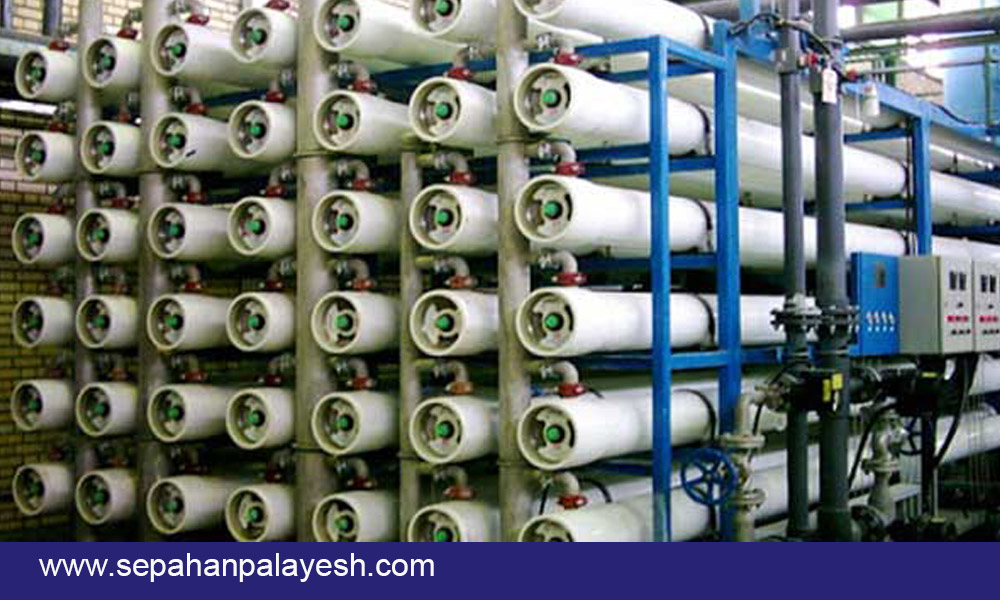
Important points in buying marine water desalination
Seawater desalination involves removing salt and impurities to produce fresh water by reverse osmosis.
The seawater first passes through a pre-purification filter (silica and carbon filter), which removes large and small particles. Then, the seawater passes through membranes under pressure. These membranes have tiny pores that separate salt, bacteria, viruses, and other impurities from the seawater. Approximately one-third of the water that enters the reverse osmosis system from the sea becomes fresh drinking water.
